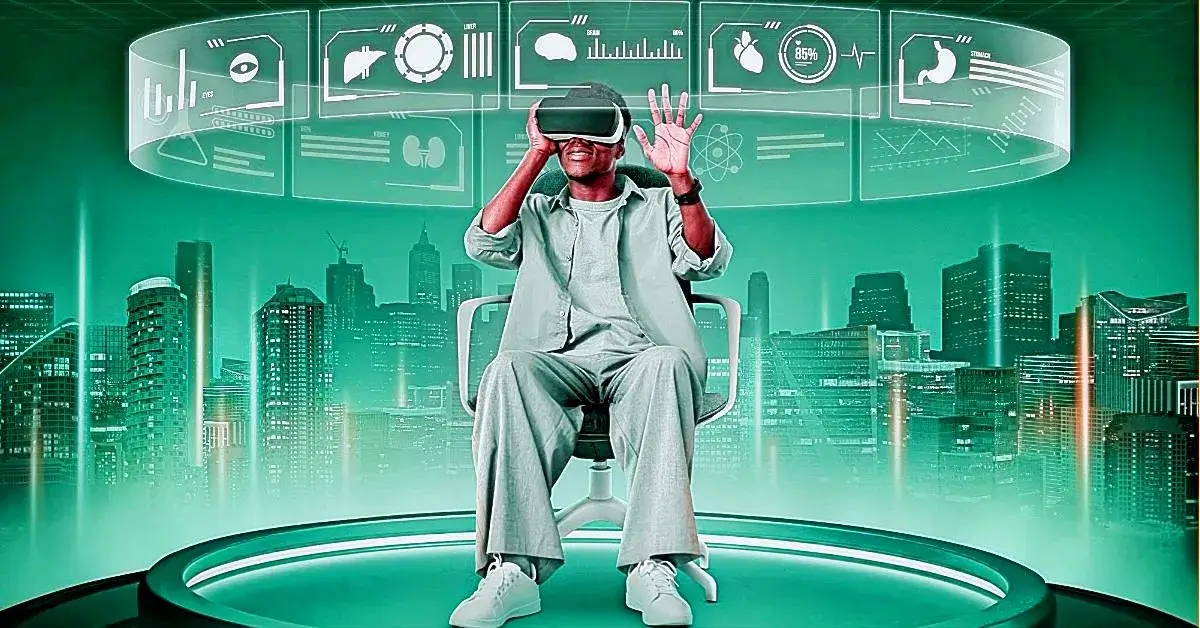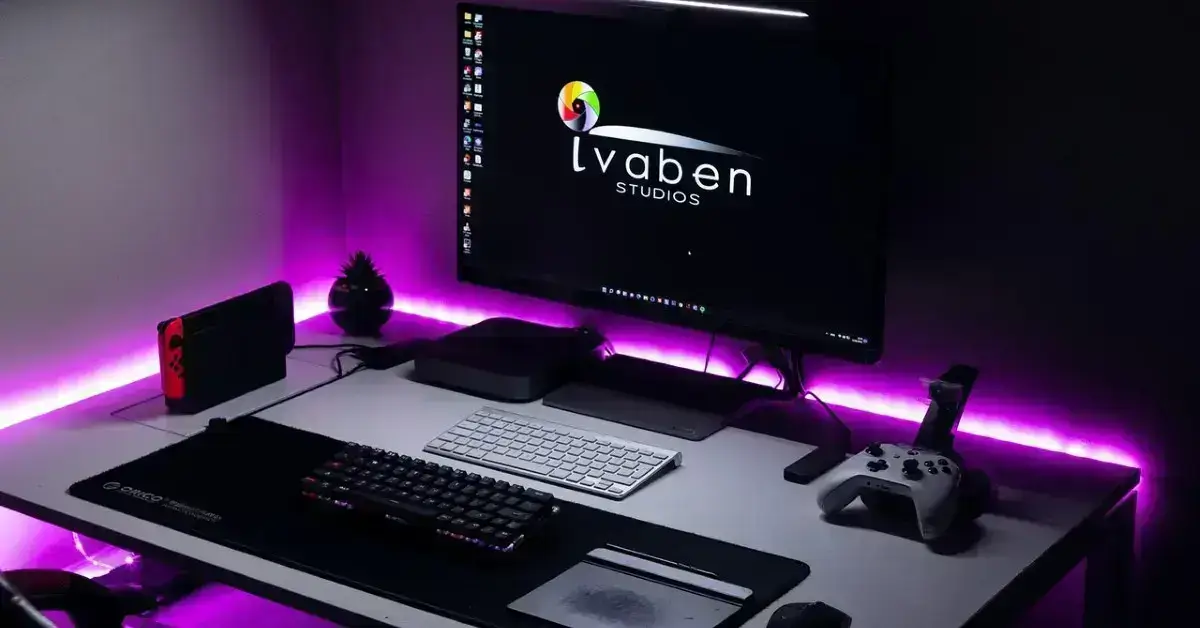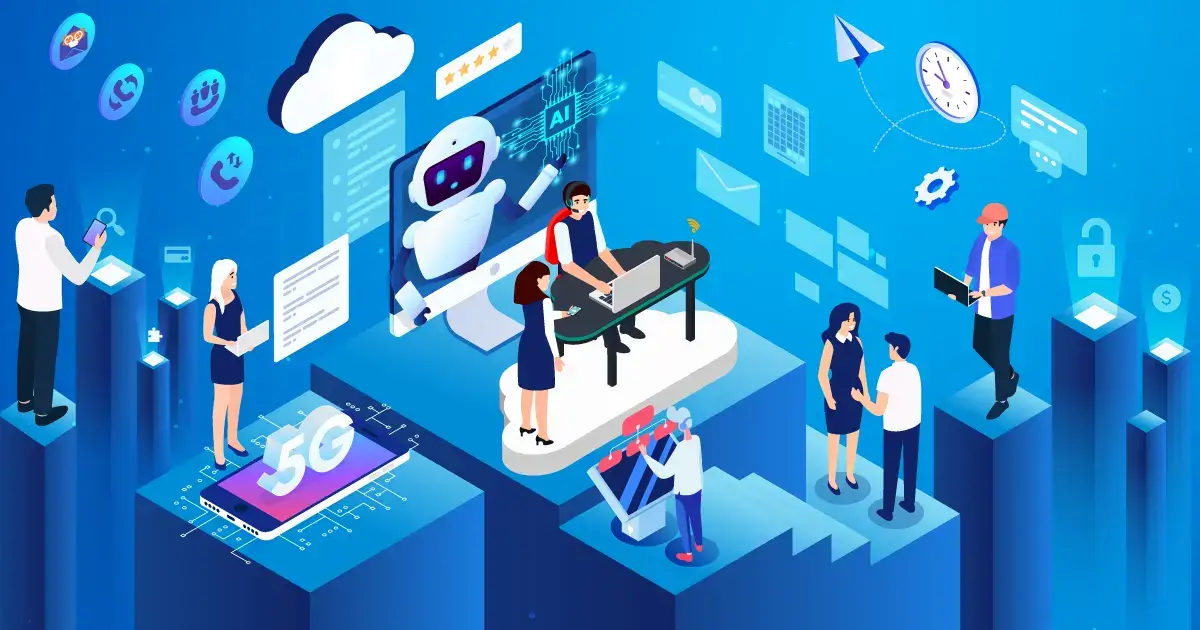15 Top reasons why technology in the classroom has its margins.
This blog post may contain affiliate links. If we find a product or service to be useful, we encourage you to visit the website via that link. If you make a purchase through our referral link, we may receive a commission. Rest assured, you will not be charged any additional fees. By using these links, you can support us while making your purchase. For more information visit here.
What comes with educational technology? This is a question that many people ask, and it is a question that is worthwhile to ask. Educational technology is vital because it helps us learn in novel and inventive ways. It can help us connect with other people and to hear from them in ways that are more personalized for us. You will learn more about educational technology in this article. Its advantages and disadvantages, future goals, and how it differs from technology alone.
What is educational technology?
It’s no secret that technology has revolutionized the way we live and work. But what about the way we learn? Educational technology refers to the tools and processes by which we automate teaching and learning.
This can include everything from low-tech tools like chalkboards and books to high-tech tools like digital boards and pens. And as technology continues to evolve, so does educational technology.
So what exactly is educational technology? It’s a broad term that can mean different things to different people. For some, it might simply refer to the use of technology in the classroom. For others, this might encompass the entire field of research, development, and application.
At its core, it is all about using technology to improve teaching and learning. This can be anything from developing new technology-based learning materials to helping teachers plan and deliver their lessons. In the next few years, educational technology can be a powerful tool for enhancing teaching and learning.
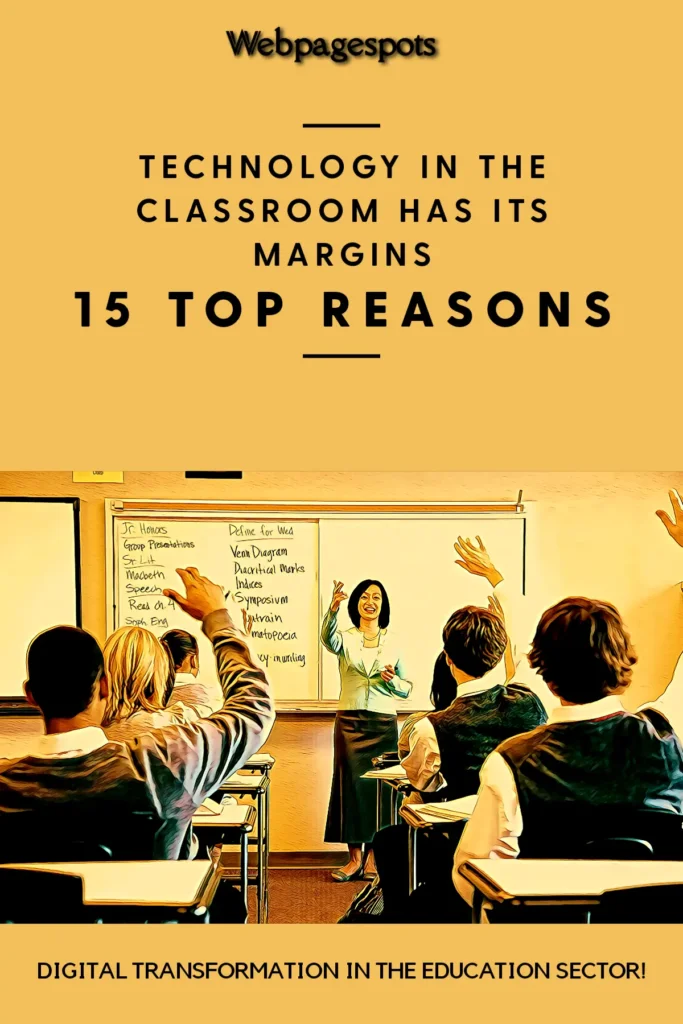
The reason we use educational technology in schools.
Technology has become an integral part of our lives. We’re using it for communication, entertainment, and even education. Unsurprisingly, educational institutions are widely incorporating technology into the classroom.
There are many reasons educational technology is beneficial for students and teachers. For learners, it can help make learning more engaging and interactive. It also makes it easier to assess student understanding and provide feedback. Besides, technology can help connect students with resources and experts outside the classroom.
Of course, there are also some challenges that come with using educational technology. For example, finding age-appropriate and curriculum-aligned resources can be challenging. On the flip side, technology can be a distraction if not used effectively.
In short, educational technology is a powerful tool to enhance learning. It engages students, gives many resources, and promotes ability when used with care.
What is the goal of educational technology?
There are many types of educational technology. These are online learning tools, computer-based simulations, multimedia resources, and social networking tools. Each of these has its own strengths, and one can use them in different ways to support student learning. For example,
- Online learning tools can provide students with extra practice or remediation,
- While computer-based simulations can help create more realistic learning environments,
- Multimedia resources can help students learn new information,
- Social networking tools are there to foster collaboration and discussion.
The goal of educational technology is to improve student learning by using technology. (Technology to enhance teaching and learning). Educational technology has a variety of learning objectives. These can range from increasing knowledge and understanding to developing higher-order thinking skills.
Educational technology can help teachers improve student engagement and achievement when used effectively. People can use educational technology in various ways to support student learning. These are some of the most common goals for using educational technology:
- To provide students with extra practice or remediation.
- To create more realistic learning environments.
- It can help students learn new information.
- To encourage collaboration and discussion.
- To assess student learning.
Educational technology can help students learn new information. For example, a student might use w3schools to learn a new computer language. Or they might use another website to research a topic for a school assignment.
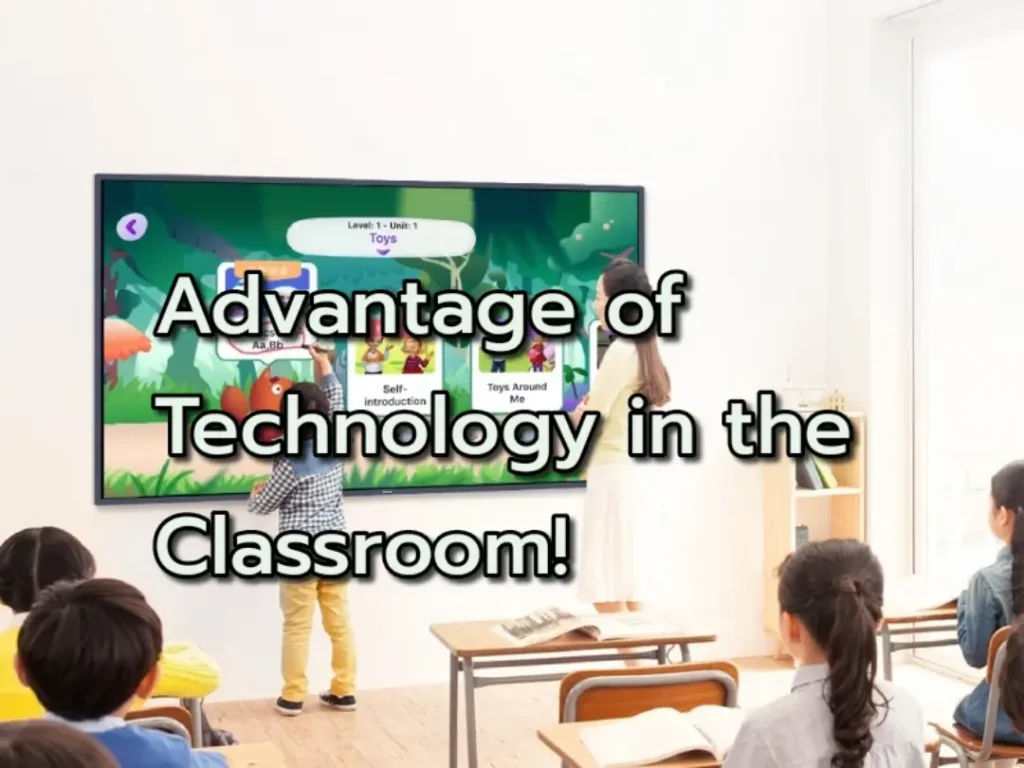
15 Advantages of educational technology
Let’s talk about the advantages of educational technology. It is no secret that educational technology has revolutionized the field of education. There are now more apps and tools than ever to help students succeed, from online learning platforms to AI-powered tutoring systems. But what are the advantages of educational technology? Here are 15 advantages of educational technology, e.g. using technology in the classroom:
- Access to Information
With automation, students can access virtually any data they need for their studies.
- Increased Engagement
It can help to engage students in their learning by making it more interactive and engaging.
- Improved collaboration
Students can use technology to collaborate more easily in person and online.
- Personalized Learning
Technology allows for more personalized and customized learning experiences. Students can learn at their own pace and choose materials that fit their interests and needs.
- Increased Motivation
Technology can increase students’ motivation to learn by making it fun and exciting.
- Greater Accessibility
Technology can make education more accessible for all students, including those with disabilities.
- Improved Assessment: With technology, teachers can quickly assess students’ understanding and progress.
- Enhanced Productivity
Technology can help students to be more productive and efficient in their work.
- Improved Communication: Technology can help students communicate more effectively in person and online.
- Enhanced creativity
It can help students to be more creative in their work by providing new tools and resources.
- Increased critical thinking
Technology can encourage students to think critically and analyze information more deeply.
- Greater global connections
Technology can help students connect with others worldwide and learn about different cultures.
- Prepare for future careers
With technology, students are getting ready for the future when most jobs need technical skills.
- Develop learning skills throughout the life
Technology can help students to develop lifelong learning skills, which are essential for success in the 21st century.
- Save time and effort
It can save teachers time and effort by making it easier to manage and administer their classes.
Undoubtedly, technology has had a significant impact on education. It has completely transformed the way we learn and process information. Finally, educational technology can enhance college and career preparation.
Students can now develop critical thinking, problem-solving, and digital literacy skills. These skills are essential for college and workplace success, as they can enhance learning outcomes.
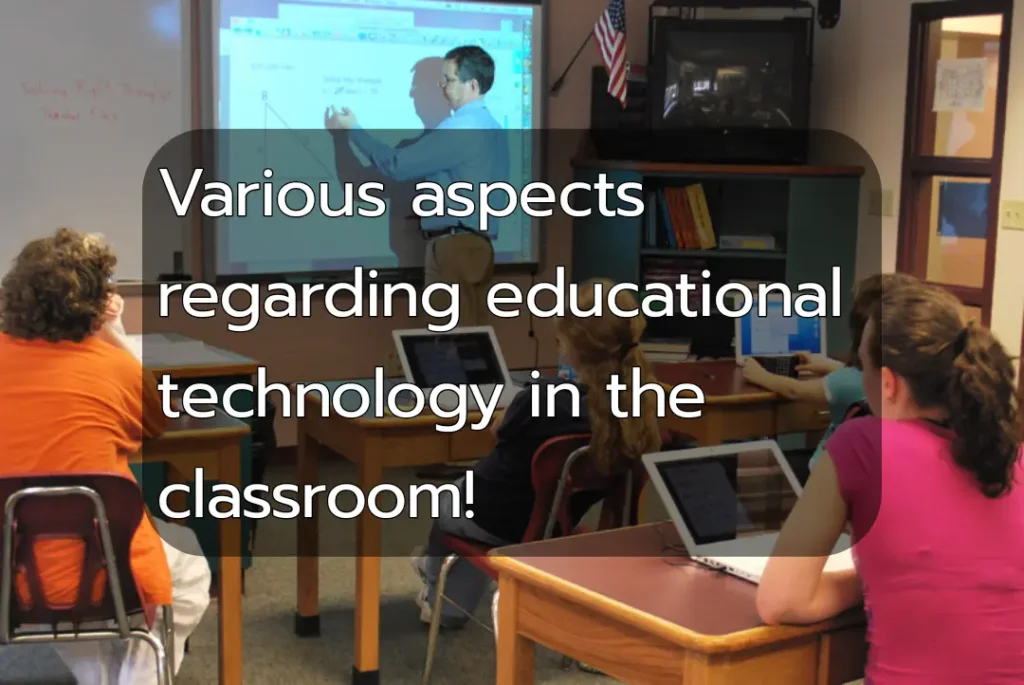
15 Disadvantages of educational technology
Everything in the world which has its advantages also has some disadvantages. It is no doubt that educational technology has transformed the way we learn. Still, using technology in education may also have some disadvantages.
- Distraction
It is easy to get distracted when using technology, especially if other people are around.
- Addiction
It is possible to become addicted to using technology, which can lead to problems in other areas of life.
- Dependence
We can become reliant on technology, which can make it difficult to function without it.
- Isolation: Technology can isolate us from the world and the surrounding people.
- Health problems
Too much time spent on technology can lead to health problems such as neck pain, obesity, and eyestrain.
- Lack of social skills
With less face-to-face interaction, we can lose critical social skills.
- Lack of concentration: It can be challenging to concentrate when using technology. It is especially if other things are going on around us.
- Poor sleep
Screen light can interfere with our sleep patterns. This can lead to fatigue and sleep derangement.
- Information overload
With so much online information, knowing what is true and useless can be difficult.
- Fake news
With social media, it is easy for false information to spread quickly.
- Cyberbullying
People can use technology to force or harass others, leading to severe consequences.
- Cheating
With technology, it is easy to access answers or cheat on tests.
- Plagiarism
With innovation, copying, and pasting information without giving credit to the original author is easy.
- Theft
Technology can be used to download music, movies, and other content illegally without paying for them. And it is happening.
- Cost-effective: Technology can be expensive for some people.
The differences between educational technology and technology in education
There is a significant difference between educational technology and technology in education. Educational technology is a field of research that deals with the use of technology in the academic sector. On the flip side, technology in education uses technology in the classroom or schools.
Here are our 9 differences between educational technology and technology in education:
- As mentioned above, educational technology is a field of study. However, technology in education refers to the use of technology in the classroom or in colleges.
- Educational technology focuses on using technology to enhance learning methods. In reverse, technology in education focuses on using technology for teaching.
- Educational technology is about using technology to create novel and inventive ways of learning. But technology in education is about using technology to improve existing teaching methods.
- Educational technology is concerned with the creation of modern educational materials and resources. Besides that, using current instructional materials and resources is what technology in education is all about.
- Educational technology is the use of technology to support and improve educational processes. Technology in education is about using technology to replace or supplement existing processes.
- Educational technology is about using technology to enhance communication and collaboration among learners. Technology in education is about using technology to speed up teamwork among teachers.
- Educational technology is the use of technology to promote enthusiastic and engaged learning. But technology in education is about using technology to support and manage learning.
- Educational technology is a tool used to customize learning experiences. Yet, technology in education is about using technology to provide standardized learning experiences.
- Educational technology is about using technology to empower learners. In contrast, technology in education is about using technology to control learners.
Differentiating between educational technology and technology in the classroom can be tricky. But as a whole, educational technology is formal, while technology in the classroom is informal. Finally, educational technology is usually more expensive than technology in the classroom. I hope this was helpful!
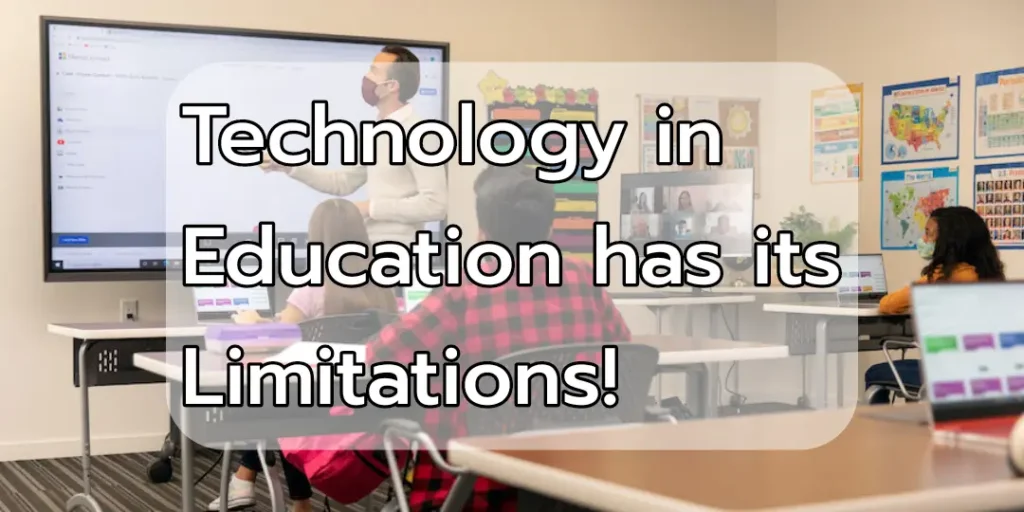
There are many reasons why technology in education has its limitations.
There are many reasons technology in education has its limitations. Here are five of the most significant ones:
- Technology can be challenging to use. Even when students have access to technology, they may not have the skills or knowledge necessary to use it.
- Technology can be a distraction, preventing students from focusing on their studies.
- Many students don’t have access to technology at home, so they can’t use it to complete their assignments. Thus, the use of technology can have a negative impact on learning.
- Technology can be expensive, and schools may not have the budget to buy and maintain the latest tools.
- Technology can be unreliable because it changes at any time. So educators must always update their skills and knowledge to keep up with the latest trends.
Despite these potential drawbacks, there are many benefits to using technology in the classroom:
- Technology in education can help teachers engage students in learning activities.
- Technology can increase students’ access to information and help them learn more efficiently.
- It can help teachers assess students’ progress and identify areas where they need further support.
- Technology can help students collaborate with classmates from around the world.
- Technology can help schools save money by reducing the need for printed materials.
Future: 7 Trends of educational technology
There’s no doubt that technology is transforming the landscape of education. Here are seven trends of educational technology that we expect to see more of soon.
- Increased use of mobile devices
With the ever-increasing power and capabilities of mobile devices, these are becoming more popular. So we expect to see more students using these devices for learning.
- More use of gamification
Gamification, or game-like elements in education, is an effective way to engage students and promote learning. We expect to see more educators using gamification in their classes.
- More focus on personalized learning
With technology, we can tailor learning experiences to the individual needs of each student. We can expect to see more personalized learning in the future.
- More use of augmented and virtual reality
Augmented and virtual reality is becoming more and more realistic and affordable. Educators will increasingly use these technologies to provide immersive learning experiences for students.
- More use of artificial intelligence
Artificial intelligence is being used more and more to help students learn. We can expect this trend to continue as AI technology gets more sophisticated.
- More use of data analytics
It can use data analytics to track student progress and identify areas where they need help. We expect to see more educators using data analytics to improve student learning.
- More focus on global education
With technology, we can connect with people all over the world. We will see more educators using technology to create global learning experiences for their students. Thank you for reading.
Understanding the importance of copyright law is absolutely vital, as it strictly prohibits any reproduction or replication of works without the explicit permission of the author. Any unauthorized duplication of content will lead to legal action for copyright infringement under Section 14 of the Copyright Act.






